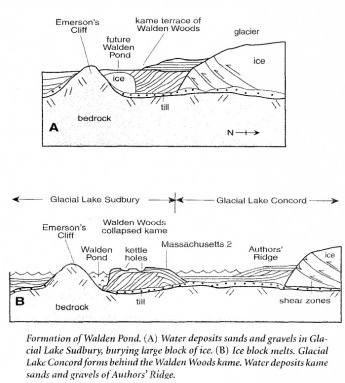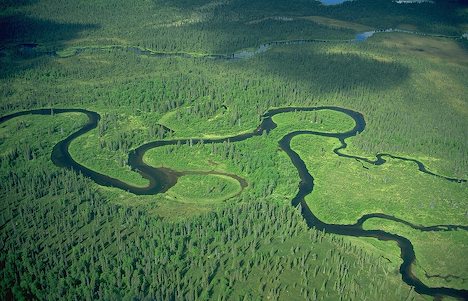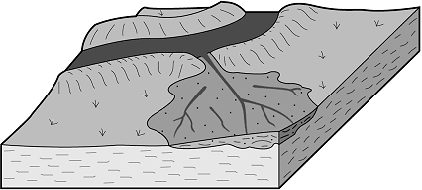Yesterday I visited the Concord River, in Concord, near where Rt. 62E crosses Rt. 2. The Concord River is a tributary of the Merrimack River. It begins in Concord, where the Assabet and Sudbury Rivers combine and drains into the Merrimack in Lowell.
By using this guide that I posted a while ago, I was able to determine the that the Concord River is an mature river and its valley was most likely formed during the last ice age. Here are a few reasons why I came to this conclusion:
1. The Concord River has a relatively low gradient. At its greatest, the river has a gradient of around 5 to 5.5 feet per mile and at its lowest the gradient is less than one inch per mile. Since the gradient is low, the velocity is low as well, and therefore there is deposition as well as erosion. These are all traits of a mature river (River Stewardship Council).
 |
| As you can see in this photo, the Concord River has a low gradient and velocity in this location. |
2. The Concord River also has a small flood plain. Mature rivers have small floodplains because they have experienced some flooding events, but not as many as old rivers. Each flooding event widens the floodplain, so if the mature river has experienced more floods than a young river but less than an old one, it makes sense for the floodplain to be small sized.
 |
| As shown here, the floodplain is quite small. |
3. The Concord River also has slight meanders, signifying that it is mature. Meanders form when deposition and erosion occur on either side of the river. Slowly, the river begins to curve to the side of the erosion, making it so that the deposition occurs on the inside of the curve where the water is slowest and doesn't have the energy to carry as much sediment. This forms a feature called a point bar. The erosion happens on the outside of the meander because the water is moving faster and can pick up more sediment, forming a cut bank. It takes time for both cut banks and point bars to form and it takes time for the river to slow down enough for there to be deposition, so large meanders are generally associated with older rivers. Since these meanders are small, it means that the river is only just starting to slow down and develop these features.
 |
| This map shows almost the entire Concord River, and as you can see, the meanders are slight. |
4. The Concord River also has a few small tributaries. The older the river, the more tributaries it has. Since this river has only a few, it must be mature as opposed to old in age.
 |
| This map shows a few of the small tributaries of the Concord River. |
5. Additionally, the Concord River lacks many river features that are associated with old rivers. For example, there are not many oxbow lakes or meander cutoffs, and levees and meander scars are pretty nonexistent. Since it is a mature river it hasn't had enough time to develop these features yet.
6. Additionally, the Concord River Valley was formed by glaciers. We know this because of the shape of the valley. Glaciers carve U-shaped valleys since they erode on all sides (except the top, obviously), while rivers create V-shaped valleys since they only erode downwards. The Concord River Valley is more U-shaped than V-shaped, so it was carved by glaciers.
Have a fantastic day!
Image Citations:
Maps copyright Google Maps


































